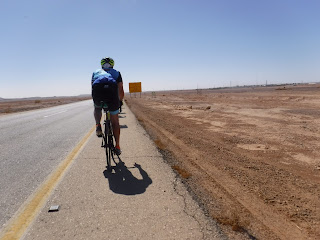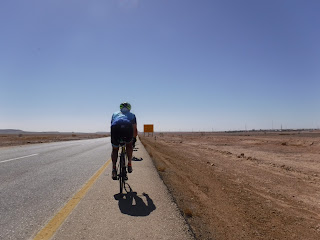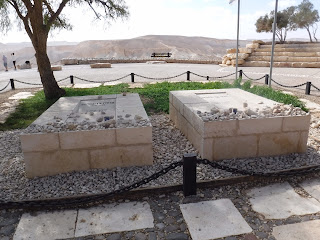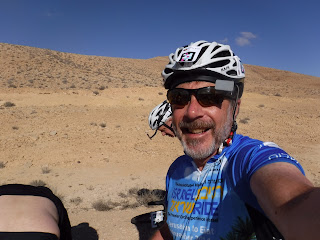October 24, 2018
I am writing this entry during the evening of October 24, after our first day of riding - though I don’t think I will be able to post it til later - the internet connection here in Ashkelon is not very good.
Ashkelo!n you say?? Where is that?? Well, We started this morning in Jerusalem. We are bussed to a lovely park outside the city. Riding from through the city is just too dangerous. We gather for an opening ceremony and read the travellers’ prayer. I had the honor of blowing the shofar to send us off, and then we are on our bikes!
We have travelled from Jerusalem, through the hills of Judea, west (mostly) to the shores of the Mediterranean Sea some 67 miles and about 3,000 feet of climbing and into the city of Ashkelon. The ride had some fast descents, and some really hard climbs (they don’t call them the Hills of Judea for nothing!). It was not the best day of riding that we will have - lots of first day logistics to work out, some jittery nerves, and a fair amount of traffic. Most of that should ease tomorrow as we leave the more populated areas and get deeper into the desert. More on that tomorrow.
I am not able to post as many photos of the scenery as I would like - the ride has not been conducive to taking many pictures. But there is a lot of photography happening in and around the ride, and I will try to post photos as they become available. But here are a few from today:
We are on the shores of the Mediterranean Sea. So a quick change into bathing suit and a dip in the calm warm waters.
A lovely way to end a day of riding.
And here is a new feature. I have a new app that creates a video of my rides over a Google Earth map. Here is Day 1: https://www.relive.cc/view/g26098144878. (If this is not a clickable link, then copy and paste it into your browser). I will try to do this each day.
Tomorrow is the longest day of the ride. We travel 91 miles into the Negev, high on the Egyptian border. I have only done this route once in the times I have been here - and my recollection is that it is stunning. On the other hand, there is a forecast for rain tomorrow, and they will pull us off the road if there is more than a drizzle. For good reasons, mostly - when it rains hard here there is a real risk of flash floods... and because it rains so little, when the roads get wet the first couple of times during the rainy season, they can get slippery from all the oil that has seeped in during the summer. But also, people get a bit freaked out with the rain, because there is so little of it.
So in anticipation of a long ride tomorrow, I am signing off for an early bedtime.
L’hitra-ot.


















































